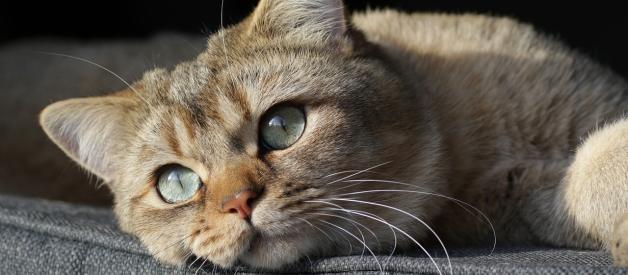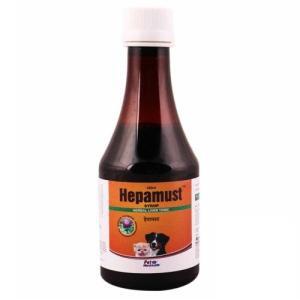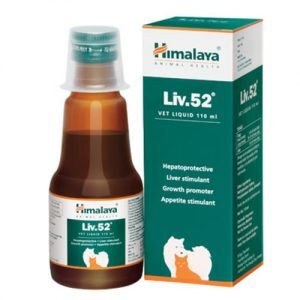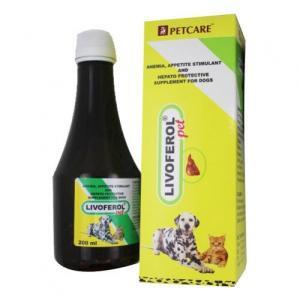Table of Contents
Liver dysfunction in cats is a serious medical condition with potentially life-threatening consequences if left untreated. The liver plays a vital role in various essential functions, such as detoxification, metabolism, and nutrient storage. When the liver is not functioning correctly, it can lead to a range of symptoms, including jaundice, lethargy, vomiting, and weight loss. Timely treatment is crucial to prevent further damage, manage the underlying cause of infection, inflammation, or toxin exposure, and improve the cat’s overall quality of life. Without intervention, liver dysfunction can progress to liver failure, which is often fatal.
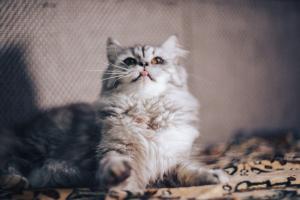
What Is Liver Disorder?
Liver disorder in cats refers to any condition that affects the normal functioning of the liver. It can encompass a wide range of diseases and issues, including hepatic lipidosis in cats (fatty liver disease in cats), liver inflammation (hepatitis), liver tumors, infections (such as feline infectious peritonitis), cirrhosis, and toxic liver damage due to ingesting certain medications, plants, or chemicals.
The liver is a crucial organ responsible for numerous vital functions, including detoxification, metabolism, and the production of essential proteins. Consequently, any disruption in its normal function can lead to severe health issues and necessitates prompt diagnosis and appropriate treatment by a veterinarian to improve the cat’s prognosis and overall well-being.
Acute Liver Failure
Acute liver failure (ALF) in cats refers to a rapid and severe loss of liver function that occurs within a short period, usually within days to weeks. It is a life-threatening condition that requires immediate medical attention. What can cause liver disease in cats? ALF can be caused by various factors, including toxins, infections, certain medications, metabolic disorders, or an unknown cause (idiopathic).
Stages of Acute Liver Failure in Cats
- Preclinical Stage: There may be no noticeable symptoms during this stage, and the cat appears normal. However, underlying liver damage is already occurring.
- Acute Hepatitis: This stage is characterized by the onset of clinical signs such as jaundice, vomiting, lethargy, loss of appetite, and changes in behavior. The liver in cats with hepatitis is significantly damaged, leading to impaired liver function.
- Hepatic Encephalopathy: As liver function continues to decline, toxins typically filtered by the liver accumulate in the bloodstream. These toxins can affect the brain, leading to neurological symptoms such as disorientation, circling, seizures, and behavioral changes.
- Comatose Stage: In severe cases, cats may progress to a comatose state due to the worsening hepatic encephalopathy. This critical stage indicates severe liver function loss and a high mortality risk.
Acute liver failure is a medical emergency, and immediate veterinary intervention is essential to diagnose the underlying cause, provide supportive care, and potentially administer specific treatments to stabilize liver function and improve the cat’s chances of survival. Prognosis and treatment options will depend on the cause and extent of liver damage.
Fatty Liver Disease (Hepatic Lipidosis)
Fatty liver disease, known as hepatic lipidosis, is a common and potentially life-threatening condition primarily affecting cats. It occurs when there is an abnormal accumulation of fat within the liver cells, leading to decreased liver function. Hepatic lipidosis typically develops as a secondary condition, often triggered by a period of anorexia or significant weight loss in cats.
The exact cause of hepatic lipidosis is not fully understood, but it is believed to be related to the way cats metabolize fat during periods of reduced food intake. When cats stop eating or experience a sudden drop in caloric intake, their bodies begin to mobilize stored fat for energy. However, the feline liver is not well-adapted to process large amounts of fat, which leads to fat accumulation within the liver cells.
Symptoms of fatty liver disease in cats include lethargy, loss of appetite, weight loss, vomiting, and jaundice (yellowing of the skin and eyes). As the condition progresses, it can cause liver dysfunction and lead to liver failure if left untreated.
Treatment for hepatic lipidosis involves addressing the underlying cause of reduced food intake, providing supportive care such as nutritional support via feeding tubes, and managing any complications. Prompt intervention is crucial for a positive outcome, as the condition can be reversible if diagnosed and treated early. However, if left untreated, fatty liver disease can be fatal. Therefore, any cat showing signs of anorexia or rapid weight loss should be evaluated by a veterinarian as soon as possible to rule out or treat hepatic lipidosis.
Ascites in Cats
Ascites in cats is a medical condition characterized by the abnormal accumulation of fluid in the abdominal cavity, which is the space between the abdominal organs and the lining of the abdominal wall (peritoneum). The accumulated fluid causes the abdomen to become distended and swollen.
There are various underlying causes of ascites in cats, including liver disease (cirrhosis or hepatic lipidosis), heart disease, kidney disease, cat liver cancer, certain cancers, infections, and inflammatory conditions. What causes inflammatory liver disease in cats? Sometimes, the exact cause may not be immediately evident and require further diagnostic investigations.
Symptoms of ascites in cats may include a visibly distended abdomen, lethargy, reduced appetite, difficulty breathing, and discomfort. The severity of clinical signs depends on the amount of fluid accumulated and the underlying condition causing the ascites.
Diagnosing ascites typically involves a physical examination, imaging techniques (such as ultrasound or X-rays), and fluid analysis obtained through abdominal paracentesis (a procedure to remove fluid from the abdomen using a needle).
Treatment for ascites in cats focuses on managing the underlying cause while also providing supportive care. This may involve medications to address the underlying condition, dietary changes, fluid drainage to relieve discomfort and improve breathing if necessary, and addressing any secondary complications.
Cats Hepatitis
In cats, hepatitis refers to inflammation of the liver. It is a common liver disorder caused by various factors, including infections, toxins, immune-mediated reactions, and certain medications. The inflammation can impair liver function and potentially progress to more severe liver damage if not properly managed.
Feline viral infections, such as feline infectious peritonitis (FIP) and feline leukemia virus (FeLV), can cause hepatitis in cats. Additionally, ingestion of certain plants, medications, or toxic substances can lead to liver inflammation. Autoimmune hepatitis, where the cat’s immune system mistakenly attacks its own liver cells, is also a possible cause.
Symptoms of feline hepatitis may include lethargy, loss of appetite, vomiting, jaundice (yellowing of the skin and eyes), increased thirst and urination, orange urine in cats, and changes in behavior. Diagnosis often involves a combination of physical examination, blood tests, and imaging studies (e.g., ultrasound) to assess the liver’s condition.
Treatment for feline hepatitis depends on the underlying cause and severity of the liver inflammation. Supportive care is commonly employed, including fluid therapy, nutritional support, and medications to manage inflammation or infection. In some cases, addressing the underlying cause, such as treating viral infections or removing toxic substances, may help manage hepatitis.
Symptoms or Signs of Liver Disease in Cats
What are the symptoms of liver disease in cats?
Liver enlargement in cats can present with various symptoms, and the severity of these signs may vary depending on the underlying cause and the stage of the disease. Some common symptoms of liver issues with cats include:
- Jaundice: Yellowing of the skin, gums, and whites of the eyes due to the accumulation of bilirubin in cats, a pigment that the liver usually processes and removes.
- Lethargy: Cats with malfunctions of the liver may appear weak, tired, and less active than usual.
- Loss of Appetite: Cats with liver issues often show a reduced interest in food and may stop eating altogether.
- Weight Loss: Unexplained weight loss can be a sign of liver disease.
- Vomiting and Diarrhea: Digestive disturbances can occur in cats with liver problems.
- Increased Thirst and Urination: Liver disease can change water intake and urinary habits.
- Behavioral Changes: Cats may exhibit altered behavior, such as disorientation, confusion, or changes in interactions with their environment and owners.
- Swollen Abdomen: Ascites (fluid accumulation in the abdominal cavity) can cause a visibly distended belly.
- Pale or Gray Gums: Liver disease can affect the red blood cell count, leading to paleness of the gums.
- Neurological Signs: In more severe cases, cats may show neurological symptoms like seizures, circling, or head pressing due to the build-up of toxins affecting the brain.
These symptoms can also be associated with various other health conditions in cats. If you notice any of these signs in your cat, it’s crucial to seek veterinary attention promptly. A veterinarian can perform a thorough examination, run diagnostic tests, and recommend appropriate treatment based on the specific underlying cause of the liver disease.
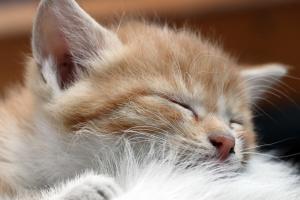
Causes of Liver Disorder in Cats
Liver disorders in cats can have various causes, and they may be primary (directly affecting the liver) or secondary (resulting from other systemic conditions). Some common causes of liver disorders in cats include:
- Feline Hepatic Lipidosis (Fatty Liver Disease): A common cause of liver disease in cats, often occurring due to prolonged anorexia or significant weight loss, which leads to the abnormal accumulation of fat in the liver.
- Infections: Viral infections, such as feline infectious peritonitis (FIP) and feline leukemia virus (FeLV), can cause hepatitis in cats.
- Toxins: Ingestion of certain medications, plants, chemicals, or other toxic substances can damage the liver.
- Hepatic Trauma: Accidents or injuries can damage the liver and cause liver disorders.
- Hepatic Neoplasia: Liver tumors, both benign and malignant, can affect liver function.
- Immune-Mediated Hepatitis: In some cases, the cat’s immune system may attack its own liver cells, leading to inflammation and liver damage.
- Hepatic Shunts are abnormal blood vessels that bypass the liver, leading to inadequate detoxification and metabolic functions.
- Bacterial or Parasitic Infections: Bacterial infections like cholangiohepatitis in cats and parasitic infections like liver flukes can affect the liver.
- Heart Disease: Certain heart conditions can lead to liver congestion and dysfunction.
- Inflammatory Bowel Disease (IBD): Chronic inflammation of the gastrointestinal tract can affect the liver’s function due to its close anatomical relationship with the intestines.
- Diabetes Mellitus: Uncontrolled diabetes in cats can sometimes lead to secondary liver problems.
- Pancreatitis: Inflammation of the pancreas can affect the liver and other organs.
These are just some common causes; other less common or rare factors may contribute to cat liver disorders. Accurate diagnosis is crucial to determine the specific cause and provide appropriate treatment. If you suspect your cat may have liver issues, it’s best to seek veterinary care promptly.
How to Diagnose Liver Disease in Cats
Diagnosing liver disease in cats requires thorough clinical evaluation, laboratory tests, and diagnostic imaging. Here are the steps typically involved in the diagnostic process.
Physical Examination
The veterinarian will perform a comprehensive physical examination of your cat, including palpation of the abdomen to check for abnormalities or swelling.
Medical History
Providing a detailed medical history of your cat, including any symptoms you’ve observed, changes in behavior, appetite, or water intake, can help the veterinarian narrow down potential causes.
Blood Tests
Blood work is essential for assessing liver function. Common tests include:
- Liver Enzyme Levels: Cat liver enzyme elevated levels of liver enzymes (ALT, AST, ALP) may indicate liver damage or inflammation.
- Bilirubin Levels: High bilirubin levels can suggest liver disease or impaired bile flow.
- Albumin and Total Protein: Low levels may indicate liver dysfunction.
- Blood Clotting Times: Abnormal clotting times can be associated with liver disease.
- Complete Blood Count (CBC): Helps evaluate overall health and check for signs of infection or anemia.
Diagnostic Imaging
Ultrasound is a valuable tool for visualizing the liver and identifying abnormalities such as masses or changes in size and texture.
Bile Acids Test
A specialized blood test evaluates the liver’s ability to process bile and assesses liver function.
Abdominal Aspiration (Cytology)
If ascites (fluid accumulation in the abdomen) is present, the veterinarian may perform a needle aspiration to collect fluid for analysis.
Biopsy
In some cases, a liver biopsy may be necessary to obtain a sample of liver tissue for microscopic examination. This can help identify the specific cause of the liver disease.
Additional Tests
Depending on the suspected underlying cause, the veterinarian may recommend specific tests, such as tests for infectious diseases, toxin screenings, or hormonal tests.
The diagnostic process aims to determine the cause and severity of the liver disease to develop an appropriate treatment plan. Once a diagnosis is made, your veterinarian can discuss the best treatment for your cat’s liver condition.
How to Treat Fatty Liver Disease in Cats
Treating Fatty Liver Disease in cats is crucial because it can be reversible if detected early, helps restore liver function, prevents liver failure, and improves the cat’s quality of life. Untreated, it can lead to severe complications and even death. Timely treatment addresses underlying causes provides nutritional support, and avoids further health issues.
Treating Fatty Liver Disease in cats involves the following approaches.
Changes in Fluid Intake
Encourage the cat to drink more water to prevent dehydration and support liver function. If abdominal fluid accumulates (ascites), fluid may be drained through paracentesis to relieve discomfort and pressure on the liver.
Diet
Offer a balanced, nutritious, and easily digestible diet to support the liver’s recovery. Pay special attention to food for cats with jaundice. In severe cases, assisted feeding or tube feeding may be necessary. In cases of anorexia, provide nutritional support through assisted feeding or feeding tubes to ensure the cat receives essential nutrients.
Medications
The veterinarian may prescribe medications to manage symptoms, reduce inflammation, and support liver health. Provide pain management and address any secondary complications that may arise.
Regular Monitoring
Ensure frequent follow-up visits with the veterinarian to monitor the cat’s progress and liver function. Minimize stress to help improve appetite and recovery. In severe cases, hospitalization may be necessary for close monitoring and intensive care.
Supplements
We recommend the following supplements that may aid in liver repair and function.
Hepamust Syrup, 200 ml (Silybum Marianum, Tephrosia Purpurea, solanum Nigrum)
Hepamust Syrup may be used for cats to support liver health or help manage certain liver conditions. However, it is crucial to consult a veterinarian before giving your cat any herbal or medicinal products. Some plants can be toxic to cats, and the dosing and safety for feline use may differ from those for humans. Here is the information about the active ingredients of the syrup:
- Silybum Marianum (Milk Thistle): Milk Thistle is a plant that contains an active compound called silymarin. Silymarin has antioxidant and anti-inflammatory properties and is commonly used in herbal medicine for its potential hepatoprotective effects. It may protect the liver from damage and aid in its regeneration.
- Tephrosia Purpurea: Tephrosia Purpurea is a flowering plant known for its medicinal properties. It has been traditionally used to treat liver disorders and promote liver health.
- Solanum Nigrum (Black Nightshade): Black Nightshade is a plant known for its potential antioxidant and anti-inflammatory properties. It has been used in traditional medicine for various ailments, including liver-related issues.
The cat liver disease home treatment may interact with other medications, so disclosing all your cat’s medications and supplements to your veterinarian is essential.
The benefits of Hepamust Syrup include supporting liver function, promoting liver health, and aiding in liver regeneration. However, the effectiveness of such supplements can vary, and they should be used under veterinary guidance and as part of a comprehensive treatment plan for any liver-related conditions your cat may have.
Liv.52 Vet Liquid, 110 ml (Caper Bush, Chicory)
Liv.52 Vet Liquid is a treatment for cats with liver disease. It is a herbal supplement manufactured by Himalaya Drug Company, specifically designed for veterinary use in animals, including cats and dogs. It contains a combination of natural ingredients, mainly Caper Bush (Capparis spinosa) and Chicory (Cichorium intybus), that is believed to have hepatoprotective and antioxidant effects. These ingredients may help detoxify the liver, promote liver cell regeneration, and support the liver’s overall metabolic activities.
Caper Bush (Capparis spinosa) is known for its hepatoprotective properties, which means it may help protect and support the liver from damage caused by toxins or infections.
Chicory (Cichorium intybus) is believed to have antioxidant properties, which can help neutralize free radicals and reduce oxidative stress on the liver.
It may be beneficial in the following ways:
- Supports Liver Function: The active ingredients in Liv.52 Vet Liquid support and enhance the liver’s detoxification processes and metabolic functions.
- Liver Protection: The supplement may help protect the liver from the damaging effects of toxins, drugs, and infections.
- Liver Regeneration: Liv.52 Vet Liquid may aid in the regeneration of liver cells, helping to repair liver damage.
Liv.52 Vet Liquid is generally considered safe when used as directed. However, individual animals may have different sensitivities or reactions to the ingredients. Some possible side effects may include mild gastrointestinal upset, such as vomiting or diarrhea, which are relatively rare.
Livoferol Pet, 200ml (Ferrous Gluconate, Ferrous Chloride, Riboflavine)
Pet Care Livoferol Supplement enhances liver function by regulating hepatic microsomal enzymes. This promotes a healthy liver, leading to improved appetite, digestion, and sleep for your pet. Additionally, Livoferol includes Vitamin B, which aids in boosting your pet’s metabolism. The medication is intended to address iron deficiency anemia in pets. Iron supplements help increase the production of hemoglobin in the blood, improving oxygen-carrying capacity and overall blood health.
Ferrous Gluconate and Ferrous Chloride are forms of iron. This essential mineral plays a vital role in forming hemoglobin, a protein responsible for carrying oxygen in the blood. Iron supplements are commonly used to address iron deficiency anemia in pets.
Riboflavin (Vitamin B2) is a water-soluble vitamin that plays a crucial role in energy metabolism and maintaining healthy skin, eyes, and nervous system in pets.
The benefits of Livoferol Pet include the following:
- Addressing Iron Deficiency: The supplement may help improve the pet’s red blood cell production and oxygen delivery if used for pets with iron deficiency anemia.
- Supporting Overall Health: Riboflavin (Vitamin B2) is involved in multiple physiological processes, supporting pets’ overall health and well-being.
Common side effects of iron supplements in pets may include gastrointestinal upset, constipation, or dark-colored stools.
It’s essential to administer any supplements under the guidance of a veterinarian. The vet can determine if your pet requires supplementation, assess the appropriate dosage, and monitor your pet’s response.
How to Prevent Liver Disorder in Cats
How to prevent fatty liver disease in cats?
Preventing liver disorders in cats involves a combination of good preventive care and early detection. Here are some tips to help prevent liver disorders in cats.
Schedule regular check-ups with your veterinarian to monitor your cat’s overall health, including liver function. Early detection of any potential liver issues can lead to timely intervention. Ensure your cat is up-to-date with vaccinations to prevent viral infections that could affect the liver. Regularly deworm your cat and provide proper flea and tick prevention to reduce the risk of liver damage caused by parasites. Follow your veterinarian’s instructions when administering medications to your cat. Avoid the use of unnecessary medications or overuse of certain drugs that can be harmful to the liver.
Feed your cat a balanced and appropriate diet, ideally designed to support liver health. Avoid feeding your cat excessive amounts of fatty or processed foods. Protect your cat from toxins and hazardous substances, including certain plants, medications, chemicals, and human food that can harm the liver. Maintain a healthy weight for your cat through a well-balanced diet and regular exercise. Obesity can put additional strain on the liver. Keep an eye on your cat’s eating habits and behavior. A veterinarian should promptly evaluate any sudden changes, loss of appetite, or abnormal behavior.
Minimize stress and environmental changes for your cat, as stress can impact liver function.
Following these preventive measures and providing your cat with a healthy and stress-free environment can help reduce the risk of liver disorders and promote your cat’s overall well-being.
FAQ
How Common Is Liver Disease in Cats?
Liver disease is relatively common in cats and can occur at any age. The prevalence varies depending on the cat’s age, breed, lifestyle, and underlying health conditions. Various factors, including infections, toxins, obesity, diabetes, and certain viral diseases, can cause cat liver disease.
How Long Does It Take to Reverse Fatty Liver Disease in Cats?
The time it takes to reverse fatty liver disease (hepatic lipidosis) in cats can vary depending on the severity of the condition, the cat’s overall health, and the effectiveness of the treatment. With prompt and appropriate treatment, including nutritional support and addressing the underlying cause of the anorexia, some cats may show improvement within a few weeks. However, in severe cases, it may take several weeks or even months for a cat to recover fully.
How Long Can a Cat Go Without Food Before Liver Damage?
Cats have a unique metabolic process that makes them susceptible to hepatic lipidosis (fatty liver disease) if they go without food for an extended period. The specific duration varies depending on the cat’s health and body condition. Generally, if a cat stops eating or significantly reduces food intake for more than a few days (typically around 2-3 days), there is a risk of developing hepatic lipidosis. It is crucial to seek veterinary attention promptly if your cat stops eating to prevent potential liver damage.
What Are the Signs a Cat is Dying of Liver Failure?
The signs of a cat dying of liver failure can include jaundice (yellowing of the skin and eyes), weakness, lethargy, loss of appetite, vomiting, diarrhea, disorientation, seizures, and changes in behavior. As liver function declines, toxins may accumulate in the bloodstream, leading to neurological symptoms and metabolic imbalances. If you suspect your cat is experiencing liver failure, it is essential to seek immediate veterinary care to assess the severity of the condition and discuss potential treatment options.

